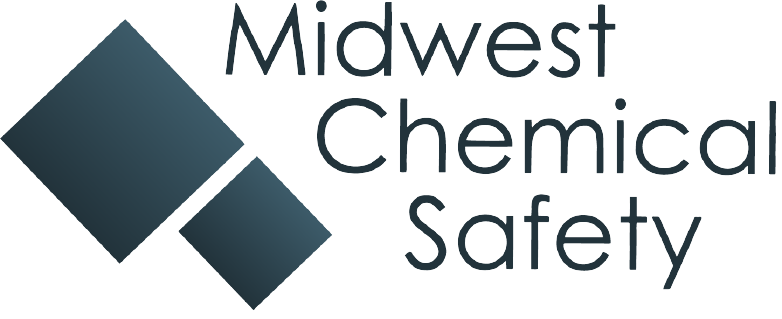This is Part Six in Midwest Chemical Safety’s series on Leadership in Environmental Health and Safety. Catch up on the series in sequential order here:
Part One: Leaders- Not Managers in EHS Leadership
Part Two: Giving Information in EHS Leadership
Part Three: Understanding Group Needs in EHS Leadership
Part Four: Group Representation in EHS Leadership
Part Five: Problem Solving in EHS Leadership
Previously, we have identified the skills necessary for leaders to form our team and get the task done. In this final part, we identify the final three skills that are necessary to keep the team together, motivated, and supported so that team members grow personally and professionally.
Counseling

As a leader, team members will come to you with challenges, and as you grow as a leader, you will be able to spot team members who are facing challenges before they bring them to you. It is best to work with individuals through their challenges because if you don’t, those individual challenges will eventually become team ones.
In general, the purpose of counseling in the context of leadership is to help team members resolve their own challenges, provide encouragement and to help team members reach their full potential in their profession.
Counseling is a private conversation with an individual team member that will help them solve challenges they may face. Also, as leaders, we will not provide “professional counseling” such as may be found with vocational counselors, clergy, or physicians. The good news is that most challenges that team members face do not require professional assistance. The bad news is that if the challenge cuts into the team’s effectiveness, then you (the team leader) have a problem. The counseling that we provide is best viewed as “first aid” – that is, if the challenge is too big that it cannot be addressed in a ten- or fifteen-minute conversation, it’s too big for you, and you should guide the individuals towards a more suitable, professional solution, such as an Employee Assistance Program if one is available at your workplace.
When Do I Counsel?
Leaders must respect the privacy of our team members.
When a team member comes to you with an issue, then there is a problem. However, discerning if an individual is experiencing some challenges can be difficult – approach that situation carefully, tactfully, and in private. Lend an ear to your team member when they are:
- Undecided (can’t or won’t make a decision)
- Confused
- Uninformed, lacking options, or believes there are no alternatives available
Counseling may also help your team member find out that a challenge does not exist or discover if what they are facing is a symptom of a larger challenge.
When you do find yourself in a situation that requires counseling, a team member listens to your colleague first. Use active listening techniques such as asking clarifying questions, repeating back, or paraphrasing what they said.
Avoid giving advice! While your team member may ultimately want you to provide advice (or make a decision for them), avoid it. Giving advice often prevents individual growth and, if you happen to give the wrong advice, perhaps because you didn’t know all the facts, then you have created a problem for yourself! Ask questions that guide the team member towards an answer, such as “Have you considered…? (alternatives or other resources to investigate). Offer encouragement to your team members and loop back after they have made a decision to check in to see how it is working out.
Managers of Learning

A “manager of learning” is fundamentally different from a teacher. The difference is the emphasis on the team member’s learning, not the leader’s teaching. There is also an attitude that should be embraced by the team leader and fostered throughout the team – life-long learning. Encourage your team members to become life-long learners and not necessarily in their field of expertise. No education of any kind is ever wasted.
As EHS organization leaders, we often have team members who are professionally certified, such as the Certified Safety Professional, Certified Industrial Hygienist, or perhaps a Professional Engineer. These professional certifications, and many others, require some form of certification maintenance or continuing education. Our job as EHS Leaders is to help our team members become more effective at what they do.
To that end, EHS Leaders absolutely must support professional continuing education as a matter of policy. That will, of course, require two of the three “Ts” – Time and Treasure. In terms of budget, you are trading Time and Treasure to maintain and develop Talent. In practice, this looks like:
- Encouraging your team member to seek professional certification by:
- Allowing release time to prepare for the professional examination.
- Forming formal and informal study groups in the organization to prepare for the exam.
- Encouraging them to participate in both distance and in-person learning for certification maintenance.
- Engaging with the group to bring back what they have learned. Have them present in group meetings summaries of workshops in which they have participated. (Note how this feeds back to other competencies such as Getting and Giving Information, Knowing Group Resources, and Group Facilitation.)
The pushback
I will often get the pushback of “If I provide all this extra education, training, and certification, the team will be more highly qualified and more prepared to leave.”
Yes, they will. However, as a team leader, I want my people to be the best, most highly qualified, and sought-after people in the profession and be able to have a career anywhere. I also want my team members to be so engaged and satisfied in their careers that they do not want to work anywhere else.
Sharing Leadership
Team leaders have a dual responsibility of getting the job done while simultaneously keeping the team together. While you, as the team leader, have the ultimate responsibility for getting the job done within the organization, you will inevitably find that you cannot do it alone, and you must distribute your leadership role throughout the group to make the group more effective and accomplish the group’s mission. You must therefore share your leadership role.
What’s Your Style (of Leadership)?
There are two extreme styles of leadership: On one side, there is task- or mission-oriented leadership – where the leader is focused primarily on the group’s mission with much less regard for the group as a whole or individuals in the group. The other side is relationship-oriented leadership, where the leader’s primary focus is on the team. The best leaders, however, will develop a blend of these two extremes dependent on the situation in front of them. This situational leadership model was developed by Paul Heresy and Ken Blanchard around 1969 as the “lifecycle theory of leadership.” (See: https://en.wikipedia.org/wiki/Situational_leadership_theory for the complete reference.) The situational leadership model has two components: Leadership style and group/individual readiness level. In their model, the “boxed” leadership styles and readiness into four categories:
- Telling is characterized by one-way communication. It is primarily used for teams or individuals that lack the skills required for the task but are willing to do the task. With respect to readiness: the team or individual is described as unable and insecure.
- Selling is characterized by two-way communication, a supportive environment, and positive reinforcement. Its primary use is for teams or individuals that are more able to accomplish the task but are unwilling or demotivated. With respect to readiness: the team or individual is described as unable but confident.
- A participating style is characterized by the leader supporting the team and individual members – focusing more on the group and less on how a task is accomplished and an abundance of two-way communication. With respect to readiness: the team or individual is described as experienced and up to the task, but they lack the confidence (or willingness) to take responsibility for the success or failure of the task. They are described as capable but unwilling.
- A delegating style is characterized by the team leader “hanging back” and allowing the team members (or individuals) to plan and perform the task. Team members determine on their own how a task will be accomplished. With respect to readiness: the team or individual is described as both experienced at the task and comfortable in their own ability to perform well. They are able and willing to take responsibility for the task. They are very capable.
Two important notes. First, no single style of leadership is considered the best for all situations. Effective leaders need flexibility and must adapt to each unique challenge. External forces on both the leader and the team will influence the choice (or choices) of leadership style of the team leader.
Second, readiness levels are also task-specific. A person or a team may be generally skilled, motivated and confident, but may face a task that is “outside their expertise” that would require them to use skills they do not yet have.
Series Concluding Remarks
Over the past decade, volunteer and professional organizations that I work with have spent a lot of time, treasure, and talent talking about or around leadership. Most of the conversation has focused on what a leader looks like as opposed to the skills a leader needs to be effective in a leadership role. I’ve attempted in the last several articles to distill and introduce those few skills that need to be introduced and developed in the next generation of professionals with the goal of inspiring professionals to make their teams “Best in Class” in the profession. Don’t wait to start developing those skills!
Finally, I want to thank my colleagues Frankie Wood-Black for expertly proofing these articles and Brian Phelps of the White Stag Leadership Development organization for his assistance in getting this series off the ground. Want to take your EHS Team to “Best in Class” but don’t quite know where to start? Call Midwest Chemical Safety, LLC, 217-971-6047 or contact me by email at harry@midwestchemsafety.com See the original LinkedIn Post Here.

